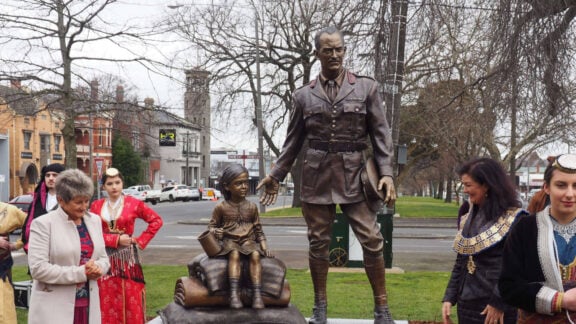The marble head of a bearded man identified as the Farnese type of Hercules has been uncovered during the underwater excavation season of the Antikythera island shipwreck.
The head dating to approximately 60BC, could provide a fit with the headless statue exhibited at the National Archaeological Museum that was found by sponge divers back in 1900 when the famous shipwreck was first discovered.
The Greek Ministry of Culture’s announcement on Sunday, followed previous findings from the 23 May – 15 June marine excavation season including two human teeth embedded in a compact mass with copper traces, objects from the ship’s equipment, copper and iron nails, and shapeless metal agglomerations covered by a crust of frozen water. All objects have been transferred to the Ephorate of Underwater Archaeology for conservation. The excavation program has been running since 2021 and will extend to 2025, with the aim to help archaeologist understand the meaning of the Antikythera Mechanism – an ancient calculation system – and connect the storyline of its other findings.
This year’s findings were discovered after massive rocks weighing several tons were lifted out of the sea, exposing parts of the shipwreck not previously visible, AMNA reported.
The mission took place with the help of a new system to remove the rocks by the Hublot Xplorations group, of the Swiss clocks company, and by the Swiss Archaeological School under the supervision of Greek and foreign archaeologists in collaboration with several Ephorates ,archaeologists and marine archaeologists, university professors from Greece and abroad, especially from Switzerland and Italy, and the Port Authority and Hellenic Coast Guard divers, among others.
Funding and equipment was provided by Hublot, the Athanasios Lascarides Foundation, which also provided the special diving ship “Typhoon”, the University of Geneva, the Switzerland-based Nereus Research foundation, and Cosmote as communications sponsor.








